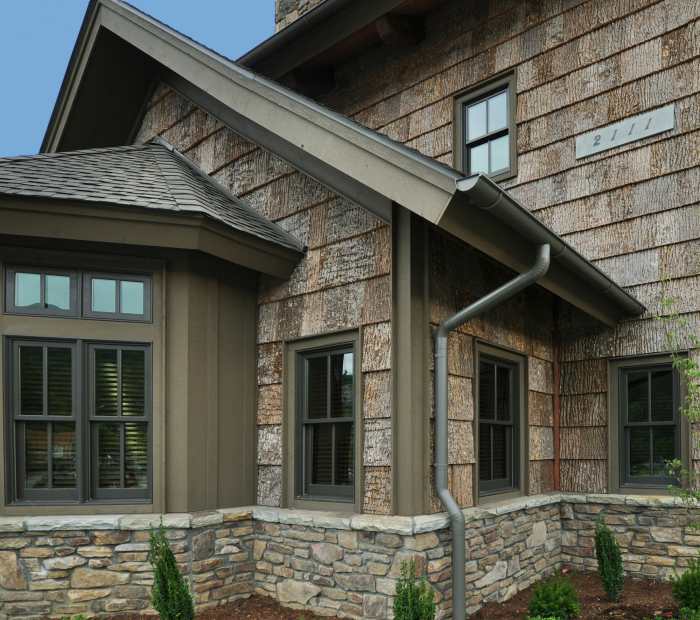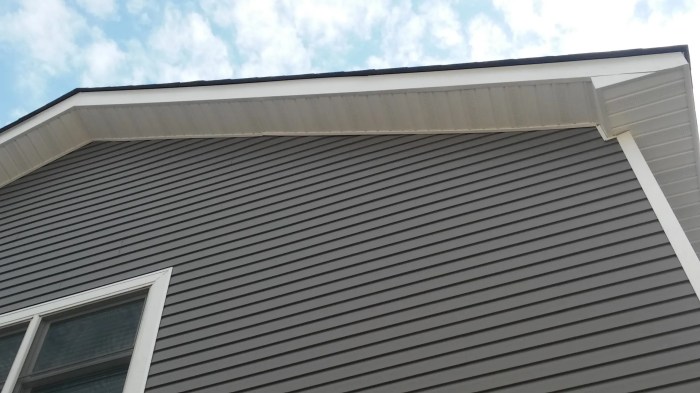Crafting Quality: Structural Repair Contractors at Your Service
As structural repair contractors take center stage, this opening passage beckons readers into a world crafted with good knowledge, ensuring a reading experience that is both absorbing and distinctly original. Whether you're a seasoned pro in the construction industry or a curious novice, the realm of structural repair contractors holds a wealth of information waiting to be explored.
With a focus on the critical role they play, the types of projects they handle, and why experience is key, this overview sets the stage for a deep dive into the world of structural repair contractors.
What are Structural Repair Contractors?
Structural repair contractors play a crucial role in the construction industry by specializing in the repair and restoration of various structural elements of buildings and infrastructure. These professionals are tasked with ensuring the safety, stability, and longevity of structures through their expertise and skills.
Types of Structural Repair Work
- Foundation repair: Addressing issues like cracks, settlement, and water damage in the foundation of a building.
- Concrete repair: Fixing deteriorated or damaged concrete elements such as walls, floors, and columns.
- Structural reinforcement: Strengthening structures through methods like carbon fiber wrapping or steel beam installation.
- Masonry repair: Restoring and repairing brickwork, stone, or stucco on buildings.
Importance of Hiring Experienced Contractors
It is essential to hire experienced structural repair contractors for projects due to the technical nature of the work involved. These professionals have the expertise to accurately diagnose structural issues, recommend effective solutions, and execute repairs with precision. Additionally, experienced contractors can ensure that repairs comply with building codes and safety regulations, providing peace of mind to property owners.
Qualifications and Skills
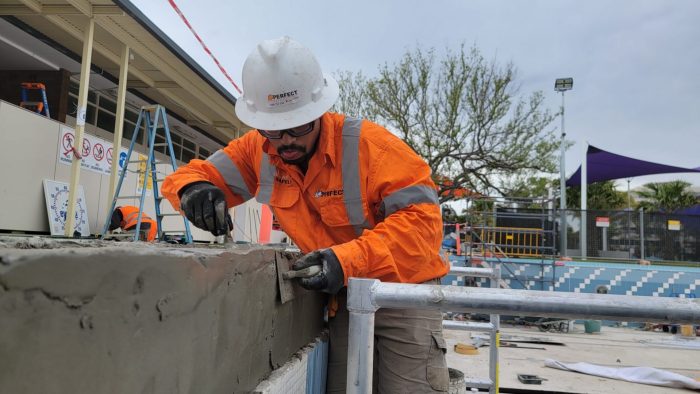
To become a successful structural repair contractor, certain qualifications and skills are essential. These requirements ensure that the contractor is capable of handling various repair projects efficiently and effectively.
Qualifications and Certifications
- Education: A high school diploma or equivalent is typically required to become a structural repair contractor. Some contractors may also pursue a degree in civil engineering or a related field for additional expertise.
- Licensing: Most states require structural repair contractors to be licensed. This involves passing a state-specific exam to demonstrate knowledge of building codes, safety regulations, and construction practices.
- Certifications: Obtaining certifications from organizations such as the American Concrete Institute (ACI) or the Structural Engineers Association (SEA) can further validate a contractor's skills and expertise in structural repair.
Essential Skills
- Problem-solving: Structural repair contractors must be adept at analyzing and diagnosing structural issues to develop effective repair solutions.
- Attention to detail: Precision is crucial in structural repair work to ensure the integrity and stability of buildings and other structures.
- Physical strength: The job often involves lifting heavy materials and working in physically demanding conditions, requiring contractors to be physically fit.
- Communication: Effective communication skills are essential for collaborating with clients, engineers, and other construction professionals throughout the repair process.
Role of Experience
Experience plays a vital role in the effectiveness of structural repair contractors. With hands-on experience, contractors gain valuable insights into different repair techniques, materials, and structural challenges. This experience enables contractors to tackle complex repair projects with confidence and efficiency, ultimately delivering high-quality results to clients.
Structural Repair Processes
When it comes to structural repair processes, contractors follow a systematic approach to assess and repair damaged structures. This involves a series of steps to ensure the safety and stability of the building.
Assessment Stage
- Initial Inspection: The contractor will conduct a thorough inspection of the structure to assess the extent of the damage.
- Structural Analysis: Engineers may perform a structural analysis to identify the root cause of the damage and determine the best repair approach.
- Documentation: Detailed documentation of the assessment findings is crucial for planning the repair process.
Repair Techniques and Methods
- Reinforcement: Adding additional support or reinforcement to the structure to enhance its strength.
- Underpinning: Strengthening the foundation of the building to address settlement or subsidence issues.
- Crack Stitching: Repairing cracks in walls or concrete surfaces to prevent further damage.
- Carbon Fiber Wrapping: Using carbon fiber sheets to reinforce and stabilize structural elements.
Variations Based on Damage Severity
- Minor Damage: Minor cracks or localized damage may require simple repairs like crack filling or patching.
- Moderate Damage: Structural issues like foundation cracks or sagging floors may need more extensive repairs like underpinning or beam replacement.
- Severe Damage: Extensive damage from natural disasters or long-term neglect may require major structural interventions like complete rebuilding or reinforcement.
Materials and Tools
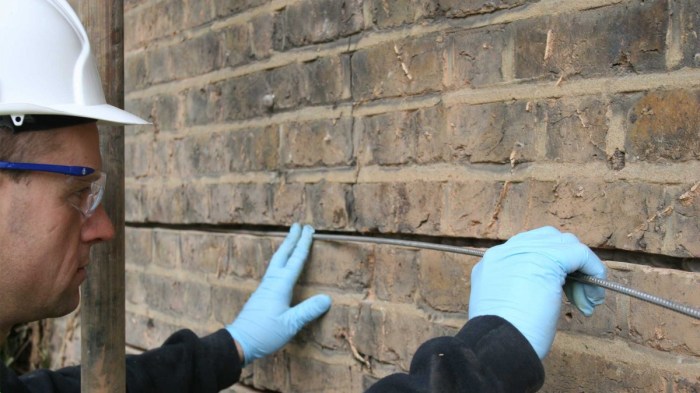
When it comes to structural repair work, using the right materials and tools is crucial for ensuring the quality and longevity of the repairs. Structural repair contractors rely on a variety of materials and tools to effectively address issues such as foundation problems, cracks, and structural weaknesses in buildings.
Materials Used by Structural Repair Contractors
- Concrete: Used for filling cracks, stabilizing foundations, and creating new structural elements.
- Epoxy Resin: Ideal for bonding, sealing, and repairing concrete surfaces.
- Steel Reinforcement: Provides additional strength to structural elements like beams and columns.
- Carbon Fiber Straps: Used for reinforcing walls and beams, especially in areas prone to movement.
- Grout: Helps to fill voids and gaps in concrete structures, improving stability.
Essential Tools for Structural Repair Jobs
- Jackhammer: Used for breaking up concrete surfaces and removing damaged sections.
- Drill: Essential for creating holes for anchors, bolts, and other fasteners.
- Level: Ensures that repaired surfaces are even and properly aligned.
- Grinder: Helps with smoothing out rough edges and surfaces after repairs.
- Epoxy Injection Gun: Used for injecting epoxy resin into cracks and voids for sealing.
Impact of Materials and Tools on Repair Quality
The choice of materials and tools directly influences the quality and longevity of structural repairs. Using high-quality materials ensures that repairs are durable and resistant to future damage. Similarly, having the right tools for the job enables contractors to work efficiently and achieve precise results.
By investing in the proper materials and tools, structural repair contractors can deliver long-lasting solutions that enhance the structural integrity of buildings.
Safety Measures
When it comes to structural repair projects, safety should always be the top priority for contractors. Adhering to strict safety measures not only protects the well-being of the workers but also ensures the successful completion of the project without any accidents or setbacks.
Importance of Safety Training
Safety training is crucial for structural repair contractors to understand the potential hazards of the job and how to mitigate risks effectively. By receiving proper training, contractors can identify safety issues, use equipment correctly, and follow protocols to prevent accidents on the job site.
Safety Protocols and Precautions
- Wearing appropriate personal protective equipment (PPE) such as hard hats, gloves, and safety goggles.
- Securing the work area with barriers and warning signs to prevent unauthorized access.
- Regular inspection of tools and equipment to ensure they are in good working condition.
- Implementing fall protection measures for working at heights, such as safety harnesses and guardrails.
- Following proper lifting techniques to prevent strains and injuries.
Epilogue
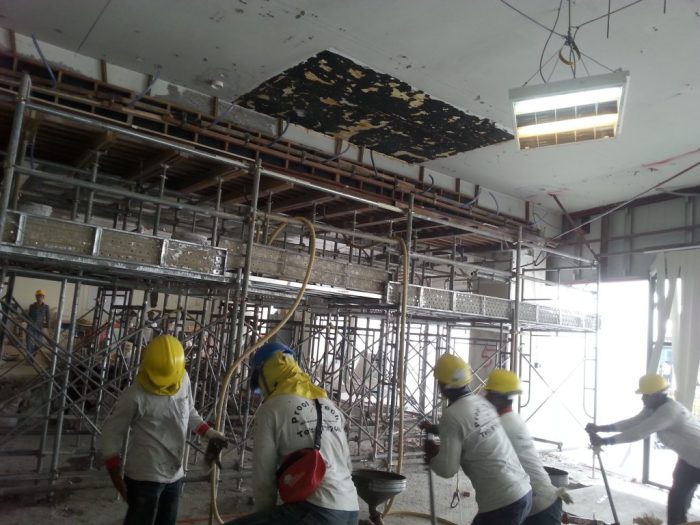
In closing, the realm of structural repair contractors unveils itself as a domain where skill, precision, and safety intertwine to form the foundation of successful construction projects. From qualifications to materials, and safety measures to repair processes, the expertise of these professionals shines through, ensuring that structures stand strong for years to come.
Dive into the world of structural repair contractors and witness craftsmanship at its finest.
Query Resolution
What are the typical qualifications needed to become a structural repair contractor?
Qualifications usually include a relevant degree or certification in construction, along with on-the-job training to gain practical experience.
What are some common techniques used by structural repair contractors in their projects?
Common techniques include epoxy injection, carbon fiber reinforcement, and underpinning to stabilize and repair structures effectively.
How important is safety training for structural repair contractors?
Safety training is crucial for ensuring the well-being of workers on-site and the successful completion of projects without any accidents.



